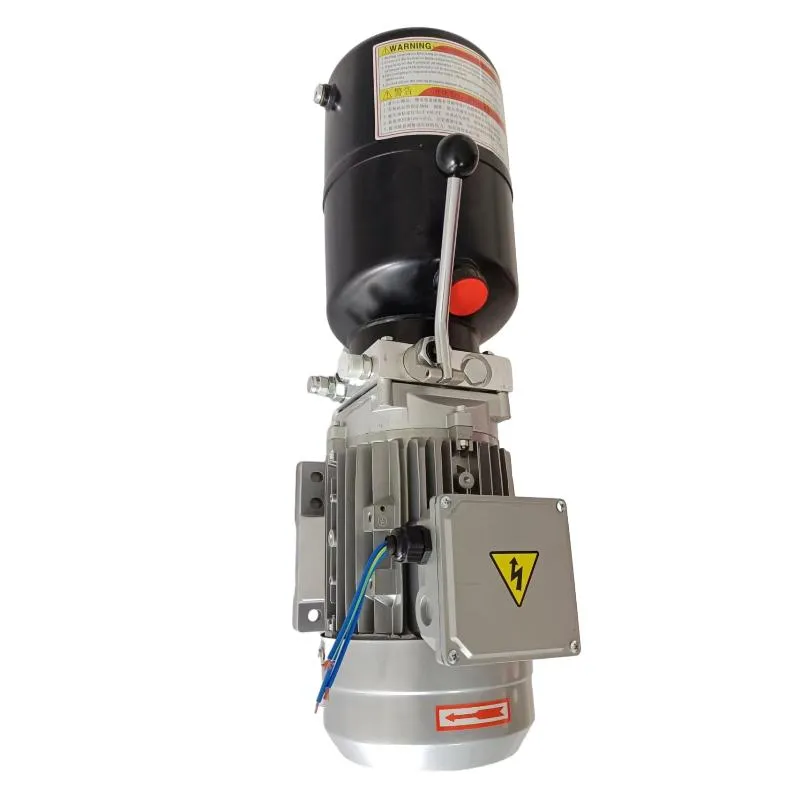Aug . 11, 2024 18:24 Back to list
Guide to Disassembling Hydraulic Cylinders for Efficient Maintenance and Repair by Manufacturers
Disassembling Hydraulic Cylinder Manufacturers A Comprehensive Guide
Hydraulic cylinders are crucial components used in various industrial applications, machinery, and vehicles. They convert hydraulic energy into mechanical work, generating linear motion through the control of hydraulic fluid pressure. As manufacturers produce these essential devices, there may come times when disassembly is necessary, whether to conduct maintenance, repairs, or inspections. This article serves as a guide for manufacturers regarding the importance and procedure of disassembling hydraulic cylinders.
Importance of Disassembly
Disassembling hydraulic cylinders is crucial for several reasons. Firstly, regular maintenance is essential in ensuring optimal performance, longevity, and reliability. Wear and tear may lead to leaks, decreased efficiency, or complete failure, affecting machine operation and productivity.
Secondly, identifying and rectifying potential issues early can save substantial costs in repairs and downtime. For manufacturers, timely disassembly and inspection provide an opportunity to replace worn seals, clean internal components, and assess the overall condition of the cylinder.
Lastly, disassembly allows for crucial modifications to be made, such as updating seals to comply with new environmental regulations or improving efficiency with the latest technology.
Steps for Disassembling Hydraulic Cylinders
1. Preparation Before disassembling a hydraulic cylinder, ensure that the work area is clean and organized. Gather necessary tools, including - Wrenches and socket sets - Screwdrivers (flat and Phillips) - Pliers - Seal pullers - Cleaning solvents - Personal protective equipment (PPE) such as gloves and safety glasses
disassemble hydraulic cylinder manufacturers

2. Depressurization Safety is paramount. Begin by safely depressurizing the hydraulic system. This involves shutting down the hydraulic power unit and disconnecting any lines supplying hydraulic fluid. Allow any remaining fluid pressure to escape through designated relief valves.
3. Identify and Remove Attachments Depending on the hydraulic cylinder’s application, various components might need to be removed. This could include mounting brackets, connectors, or sensors. Document the order of disassembly carefully for reassembly purposes.
4. Remove the End Caps Most hydraulic cylinders have end caps secured by bolts or screws. Use the appropriate tools to carefully remove these. Be cautious, as residual hydraulic fluid may escape during this step.
5. Disengage the Piston Rod Once the end caps are removed, the piston rod must be carefully pulled out from the cylinder barrel. Make sure to observe the position of seals and shims as these should be replaced if damaged.
6. Inspect Components With the piston rod removed, inspect all internal parts, including the cylinder barrel, piston, seals, and any other components. Look for signs of wear, scratches, or damage that could affect functionality. Clean all parts thoroughly to remove dirt and old hydraulic fluid residue.
7. Document and Replace Take detailed notes and photographs during disassembly to ensure accurate reassembly. Replace any worn or damaged components with OEM (Original Equipment Manufacturer) parts or high-quality aftermarket solutions that meet specifications.
Conclusion
In conclusion, disassembling hydraulic cylinders is a vital process for manufacturers aiming to maintain optimal hydraulic system performance. By following a systematic approach to disassembly, manufacturers can address issues, ensure the longevity of their hydraulic systems, and enhance overall productivity. Regular maintenance, timely disassembly, and careful inspections are essential practices that lead to successful hydraulic operations. Understanding the disassembly process not only aids in equipment longevity but also empowers manufacturers to tackle challenges effectively in the world of hydraulics.
-
1.5 Ton Flipping Oil Cylinder 70/82-40-217-720-Hebei Shenghan Hydraulic Machinery|Precision Hydraulic Cylinder,Custom Hydraulic Solutions
NewsAug.29,2025
-
1.5 Ton Flipping Oil Cylinder 70/82-40-217-720 | Hebei Shenghan Hydraulic Machinery Co., Ltd.
NewsAug.29,2025
-
High-Precision [90/105-50-180-480] Industrial Component | Durable & Reliable
NewsAug.27,2025
-
High-Performance Set of 50/60-45-290 471 | Durable & Reliable Components
NewsAug.26,2025
-
Efficient Pallet Truck Power Units - Reliable Hydraulic Systems
NewsAug.25,2025
-
Premium Set of 50/60-45-290 471 Parts | High Performance
NewsAug.24,2025
